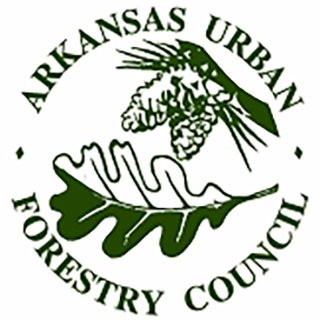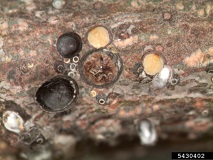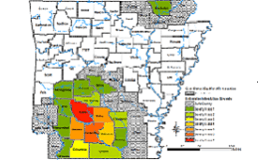What is Wrong with My Tree?
Who do you contact when you need help with a tree?
The Arkansas Department of Agriculture Forestry Division’s County Foresters offer technical assistance with many questions related to tree health. As needed, they may refer you to one of the Forestry Division’s Urban Forestry District Representatives, many of whom are ISA Certified Arborists. Urban Forestry Representatives have undergone additional training to offer tree care advice and tree risk assessments. Find your local County Forester here:
Arkansas Department of Agriculture Forestry Division’s County Foresters
The University of Arkansas System Division of Agriculture Cooperative Extension Service has offices in every county. County Agriculture Agents can assist with tree pest and disease ID and provide treatment options and may be able to provide tree selection and care recommendations. Find your local County Extension Office here:
University of Arkansas System Division of Agriculture Cooperative Extension Service
A listing of professional certified arborists can be found on the Trees are Good website. Try searching all of Arkansas since most certified arborists will provide services in a large region around their main offices. Search for a certified arborist here:
How To Remove Invasive Bush Honeysuckle
AUFC Board Member John Scott and Kristina Jones, Volunteer Coordinator with Fayetteville P&R provide tips to remove and eradicate bush honeysuckle, an invasive species. Watch their video here
Gloomy Scale
- At January 12, 2019
- By Julie Robbins
- In Uncategorized
 0
0
Gloomy scale (Melanaspis tenebricosa)is a native, armored scale insect that feeds on the bark, branches, and twigs of trees. The insect feeds on tree sap underneath waxy protective material that resemble convex lenses and are referred to as “tests”. Gloomy scale appears to be more abundant in urban than forested settings. A positive association of scale body size and population growth with warmer urban areas and higher cover of impervious surfaces has been reported. The scale distribution range is wide occurring throughout the southeastern United States from Florida to Maryland and west to Texas. The scale has one generation per year. Heavy infestations cause branch dieback and canopy thinning followed by tree death in most serious infestations.
Host: Most susceptible host is red maple (Acer rubrum) but other hosts include sugar maple (Acer saccharum), boxalder (Acer negundo), silver maple (Acer saccharinum), yellow poplar (Liriodendron tulipfera), elm (Ulmus spp.), and sweetgum (Liquidambar styraciflua).
Signs and Symptoms: Adult female covers, which are called tests, measure 2-3 mm in diameter and cover the bark of branches and twigs giving them a bumpy, warty look. The tests are dark gray to brown in color and are circular for females but more oval and smaller for males. Scale tests remain attached to the bark and are the best indicators for scale presence. Crawlers and nymphs can be observed during the summer, however. Mature females under tests are pink, wingless, and legless whereas males develop wings and legs but have a very limited life span.
Management: Red maple trees planted in areas surrounded by impervious surfaces such as roads, buildings, and parking lots would be at more risk of gloomy scale threat. Matching species to site in planting operations is best preventive measure. Cultural practices that improves water and nutrient resources for trees would reduce hazard potential. Low pressure water sprays during dormant season can be used to remove scales in light infestations, whereas chemical treatments with foliar insecticides and/or bark oil sprays may be needed in heavy infestations when cost to benefit of tree removal favor treatment.
by Mohammad Bataineh, Assistant Professor of Forest Health, Arkansas Forest Resources Center, (870) 460-1449, Bataineh@uamont.edu
Figure 1. Signs of gloomy scales tests on maple branches, from bugwood.org
Five Benefits of Community Trees
- At August 27, 2018
- By Julie Robbins
- In Uncategorized
 0
0
For years, industrialization and deforestation have made a large impact on the number of trees in our towns and cities, and the results continue to worsen. More and more research is presented confirming the value and benefits that urban trees offer our communities, and it’s time for us to listen! Check out these five benefits of urban trees to help spark the conversation in your community today!
HEALTH & WELLNESS
Trees filter polluted air, provide shade and give an attractive, calming setting for recreation. Trees have been proven to have a positive impact on incidences of skin cancer, asthma, hypertension and stress-related illness.
AIR QUALITY
Planting trees remains one of the most cost-effective ways to help reduce harmful gases in the atmosphere. In fact, a single mature tree can absorb carbon dioxide at a rate of 48 pounds per year and release enough oxygen back into the atmosphere to support two human beings.
CLIMATE CONTROL
Cities are, on average, two to five degrees hotter during the day than rural areas. This increased heat in cities can cause a number of problems, including general discomfort, respiratory impairment, stroke and even death.
Having trees is the perfect way to stay cool during the hot summer months. Trees can help offset the heat through shade and evapotranspiration, thus reducing the costs of air conditioning and other cooling methods.
VISUAL APPEAL
Few things can compare to the visual appeal of green spaces in metropolitan and downtown areas. Trees add a sense of community and civic responsibility to neighborhoods and can even increase property values by up to 15 percent. Tree-lined streets add to a community’s natural beauty and can encourage foot traffic around local businesses.
COMMUNITY IMPROVEMENT
Researchers have discovered that trees and green spaces can help reduce crime. In a 2001 study, researchers found that “the greener a building’s surroundings were, the fewer crimes reported.” Trees are said to have a therapeutic effect, decreasing mental fatigue and its associated symptoms, such as irritability and decreased impulse control, both considered to be precursors to crime. Green spaces also encourage people to spend more time socially outdoors, which, in turn, discourages crime.
If you want to learn more about how trees can benefit your community, check out our page on tree information.
Emerald Ash Borer in AR
- At August 23, 2017
- By Julie Robbins
- In Uncategorized
 0
0
The emerald ash borer (Agrilus planipennis; EAB) is considered the most costly and destructive invasive forest insect in the United States, killing nearly every ash tree (Fraxinus spp.) encountered. EAB is native to northeastern China, eastern Russia, Japan, and the Korean peninsula. Within its native range, EAB functions as a secondary colonizer killing stressed and declining trees. In North America, EAB was first detected and introduced in Detroit, Michigan. EAB larvae feed on the phloem and cambium of infested trees disrupting nutrient and water transport ability. Currently, EAB is confirmed in 17 Arkansas counties with a total of 33 counties under quarantine (Figure 1). Detection surveys will most likely confirm additional counties before the end of the year.
Host: Susceptible hosts include all species of ash, including green ash (F. pennsylvanica), white ash (F. americana), pumpkin ash (F. profunda), Carolina ash (F. caroliniana), and blue ash (F. quadrangulata). Green and white ash are the most common in Arkansas. White fringetree (Chionanthus virginicus), a native and an ornamental is also a suitable host.
Symptoms: Adult beetles are iridescent green and are between 7.5 to 13 mm long. When wings are open, purple abdominal segments are shown. Adults emerge at the end of March continuing through July and can be seen resting or feeding on tree boles and leaves. In severely infested trees, S-shaped larval galleries can be found under the bark. These galleries are packed with frass and widen with larval growth. Galleries end in shallow chambers used by prepupae over winter. EAB larvae are creamy white, legless, with bell-shaped body segments-last segment has pincer-like appendages. Infested ash trees initial symptoms include crown dieback and epicormic branching on the main bole followed by bark splits, woodpecker feeding holes, basal sprouting, and D-shaped exit holes on the main trunk.
Conditions: Availability of host material seems to be the only limiting factor of EAB distribution and spread. EAB attacks healthy and stressed trees, although stressed trees are preferred. Trees as small as 1 inch in diameter are colonized, and foliage feeding by EAB adults occurs but causes minor defoliation. Open grown ash trees, such as yard and urban trees, are preferentially targeted by EAB adults.
Management: The current imposed quarantine encompasses 33 counties and prohibits the movement of quarantined items, such as hardwood firewood and ash nursery stock, green lumber, and other living or cut material, outside of the quarantine area. Contrary to common belief, several management options are available to protect ash trees and manage EAB populations. A wide variety of insecticides are currently available to protect valuable ash trees effectively for multiple years. In fact, insecticide treatments were shown to be more economical than ash tree removal in urban settings. Treatments when trees are still healthy or at the onset of infestation are most prudent as most insecticides act systemically. Within EAB confirmed counties, insecticide treatments should begin when infested spots are within 10-15 miles of the area of interest. In Arkansas, ideal treatment times are the last week of March and the first two weeks of April. Removal and replacement of ash trees is an alternative. Ash tree wood is valued for many uses including hand tools and baseball bats and it is prudent to utilize the wood resulting from removal operations. Please report signs and symptoms of EAB to Arkansas State Plant Board and for more information refer to www.emeraldashborer.info or www.arinvasives.org
By Mohammad Bataineh, Assistant Professor of Forest Health, Arkansas Forest Resources Center, (870) 460-1449, Bataineh@uamont.edu
Tree City USA
- At October 26, 2016
- By artrees
- In Uncategorized
 1
1
More than 3,400 communities have made the commitment to becoming a Tree City USA. They have achieved Tree City USA status by meeting four core standards of sound urban forestry management: maintaining a tree board or department, having a community tree ordinance, spending at least $2 per capita on urban forestry and celebrating Arbor Day.
Membership
- At October 06, 2016
- By artrees
- In Uncategorized
 0
0
The main criterion for membership is an interest in urban & community forestry. The cost of membership is $10 per student, $25 per individual, $50 per family, $100 per government/business or $350 per patron. Learn more on our Membership page.










